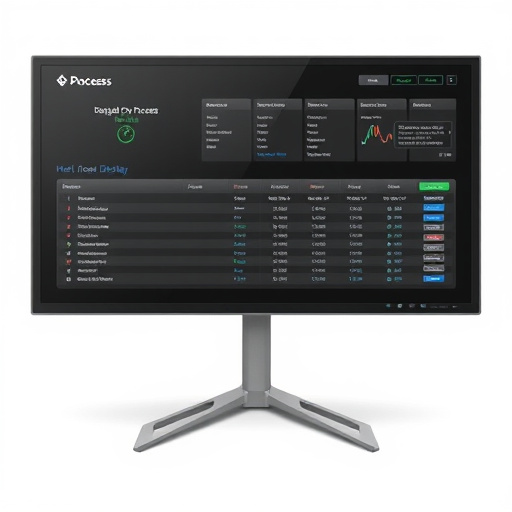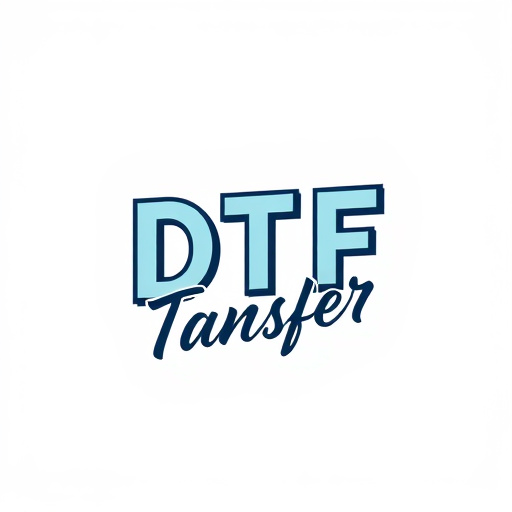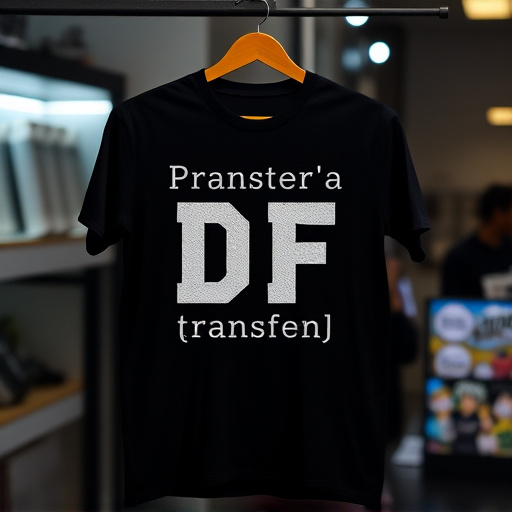Direct-to-Film (DTF) Transfer is a cutting-edge printing technology offering exceptional flexibility and precision for custom designs. By printing ink directly onto thin films that can be transferred to various materials, DTF provides faster turnaround times, vibrant colors, and intricate details suitable for short-run or personalized projects. The quality of DTF prints heavily depends on fabric selection, with natural fibers like cotton absorbing ink better and synthetic fabrics like polyester offering durability. Proper preparation, including surface cleaning and pre-treatment, enhances print clarity and longevity. DTF's versatility allows for high-quality printing on numerous surfaces, from fabrics to metal, as demonstrated by successful applications in apparel, automotive interiors, and weatherproof murals.
Direct-to-film (DTF) transfer printing is revolutionizing various industries by offering precise and vibrant print results on a diverse range of surfaces. This article delves into the intricacies of DTF technology, guiding you through the process from start to finish. We explore key factors in choosing optimal fabrics for DTF printing, highlighting surface properties that ensure successful applications. From popular fabric types to enhancing print quality techniques, we provide valuable insights backed by case studies showcasing exceptional DTF prints on varied surfaces.
- Understanding Direct-to-Film (DTF) Transfer: A Brief Overview
- Key Factors in Choosing Optimal Fabrics for DTF Printing
- Surfaces That Excel in DTF Application: Properties to Consider
- Popular Fabric Types for Exceptional DTF Results
- Enhancing Print Quality: Techniques for Ideal DTF Transfers
- Case Studies: Successful DTF Prints on Various Surfaces
Understanding Direct-to-Film (DTF) Transfer: A Brief Overview

Direct-to-Film (DTF) Transfer is a cutting-edge printing technique that has revolutionized the way we produce custom designs on various surfaces. This innovative process allows for precise and high-quality application of graphics directly onto films, which can then be transferred to a wide range of materials. DTF Printing offers unparalleled flexibility in terms of design possibilities and substrate choices, making it a favorite among professionals in diverse industries.
The DTF Transfer process involves using specialized printers to apply ink directly onto a thin film, creating durable prints that are both vibrant and long-lasting. This method is particularly advantageous for short-run or custom printing projects, as it eliminates the need for complex set-up and plate preparation, resulting in faster turnaround times. Whether applied to materials like t-shirts, mugs, or even packaging, DTF Prints deliver exceptional detail and color accuracy, ensuring a visually appealing end product that meets modern consumer expectations.
Key Factors in Choosing Optimal Fabrics for DTF Printing

When selecting fabrics for direct-to-film (DTF) printing, several key factors come into play to ensure optimal results. The primary consideration is the fabric’s ability to accept and retain ink effectively. This involves understanding the fabric’s porosity, texture, and overall surface characteristics. Natural fibers like cotton and linen are popular choices due to their openness, allowing for better ink penetration and ensuring vibrant DTF prints. On the other hand, synthetic fabrics like polyester offer excellent dimensional stability, minimizing shrinkage or distortion after printing.
Moreover, the intended use of the final product is crucial. For items that will be frequently handled, such as apparel or bags, durability is essential. Fabrics with a higher thread count or reinforced construction can withstand wear and tear better. Additionally, considering the fabric’s color and opacity is vital to achieve precise DTF transfers. Opaque fabrics prevent ink from showing through, ensuring clean, high-quality prints. The ability to pre-treat the fabric to enhance ink adhesion and resistance to fading should also be taken into account for long-lasting DTF prints.
Surfaces That Excel in DTF Application: Properties to Consider
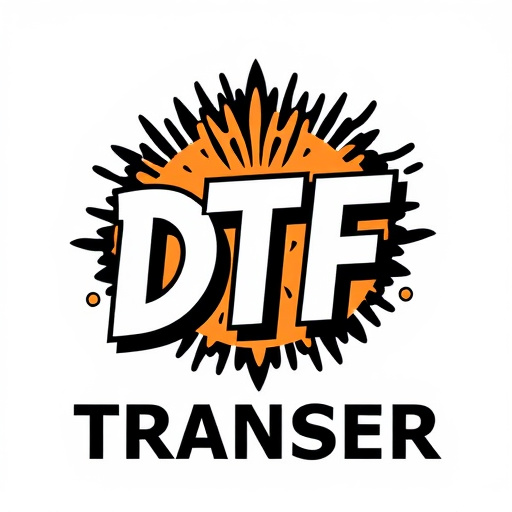
When it comes to direct-to-film (DTF) application, choosing the right fabric or surface is paramount for achieving high-quality DTF prints. Surfaces that excel in DTF application typically possess several key properties. Firstly, they offer a smooth and even texture that allows ink to adhere seamlessly, ensuring crisp and vibrant DTF transfers. Secondly, these surfaces are designed to withstand the rigors of the printing process, resisting smudging or blistering under high heat and pressure.
Moreover, consider surfaces with excellent dimensional stability, which means they maintain their shape and dimensions even when heated or cooled. This is crucial for precise DTF printing, as it minimizes warping or distortion in the final prints. Additionally, many optimal surfaces for DTF application are inherently durable, resistant to fading, cracking, or peeling over time, ensuring that DTF prints remain vibrant and long-lasting.
Popular Fabric Types for Exceptional DTF Results

When it comes to achieving exceptional results in direct-to-film (DTF) transfer and printing, the choice of fabric plays a pivotal role. Popular fabric types like polyester, cotton, and poly-cotton blends are favored for their versatility and compatibility with DTF inks. These fabrics offer excellent absorption properties, ensuring vibrant and long-lasting DTF prints. The smooth texture and even weave structure facilitate easy ink flow, resulting in crisp and detailed DTF transfers.
Polyester, in particular, stands out due to its durability and resistance to fading or cracking over time. This makes it ideal for outdoor applications and ensures that DTF prints maintain their quality under various environmental conditions. Cotton, on the other hand, provides a soft and natural feel, making it suitable for apparel and fashion-related DTF transfer projects. The choice of fabric directly impacts the final output’s appearance and longevity, so selecting the right material is crucial for achieving outstanding DTF results.
Enhancing Print Quality: Techniques for Ideal DTF Transfers
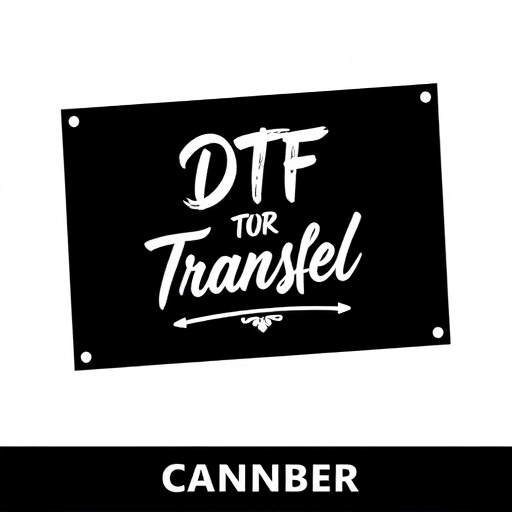
Enhancing Print Quality: Techniques for Ideal DTF Transfers
When it comes to direct-to-film (DTF) applications, achieving high-quality prints requires careful consideration of both fabric and surface preparation. The right fabrics, such as smooth, tightly woven materials like polyester or cotton blends, offer optimal adhesion for ink transfer. Pre-treating the fabric with suitable primers or coatings can further improve print clarity and durability, ensuring vibrant DTF prints that resist fading or smudging.
For seamless DTF transfers, it’s crucial to prepare the surface of the material. This involves cleaning the surface to remove any contaminants, grease, or dust that could hinder ink adhesion. Techniques like plasma treatment or flame treatment can activate the fabric’s surface, enhancing its ability to bond with the printed ink. Additionally, proper film selection and printing conditions, including optimal temperature and pressure settings, play a significant role in producing crisp, precise DTF prints.
Case Studies: Successful DTF Prints on Various Surfaces
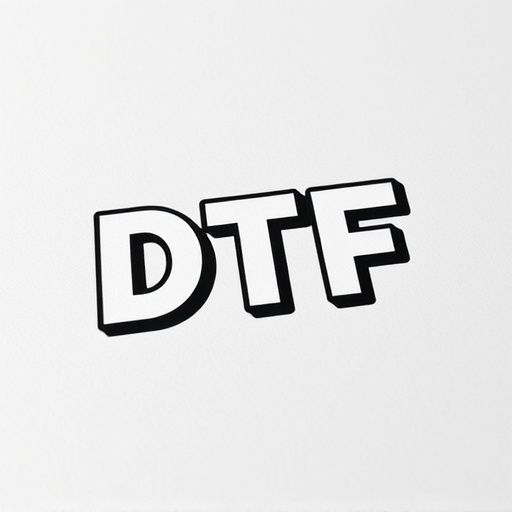
Direct-to-film (DTF) printing has seen significant success in various industries due to its ability to produce high-quality, durable prints on diverse surfaces. Case studies demonstrate the versatility of DTF technology, showcasing successful applications on a range of materials from traditional plastics and fabrics to unconventional options like wood, metal, and even glass.
One notable example involves a fashion brand that utilized DTF transfer for printing intricate designs onto cotton t-shirts, achieving vibrant colors and precise details. Similarly, an automotive company successfully applied DTF prints to car interiors, enhancing aesthetics with custom patterns on dashboards and door panels. Additionally, architectural firms have embraced DTF for creating visually stunning murals and decor on walls, leveraging the technology’s ability to produce long-lasting, weather-resistant artwork. These real-world applications highlight the adaptability of DTF Printing, making it a preferred choice for professionals seeking high-impact visual solutions across different sectors.



